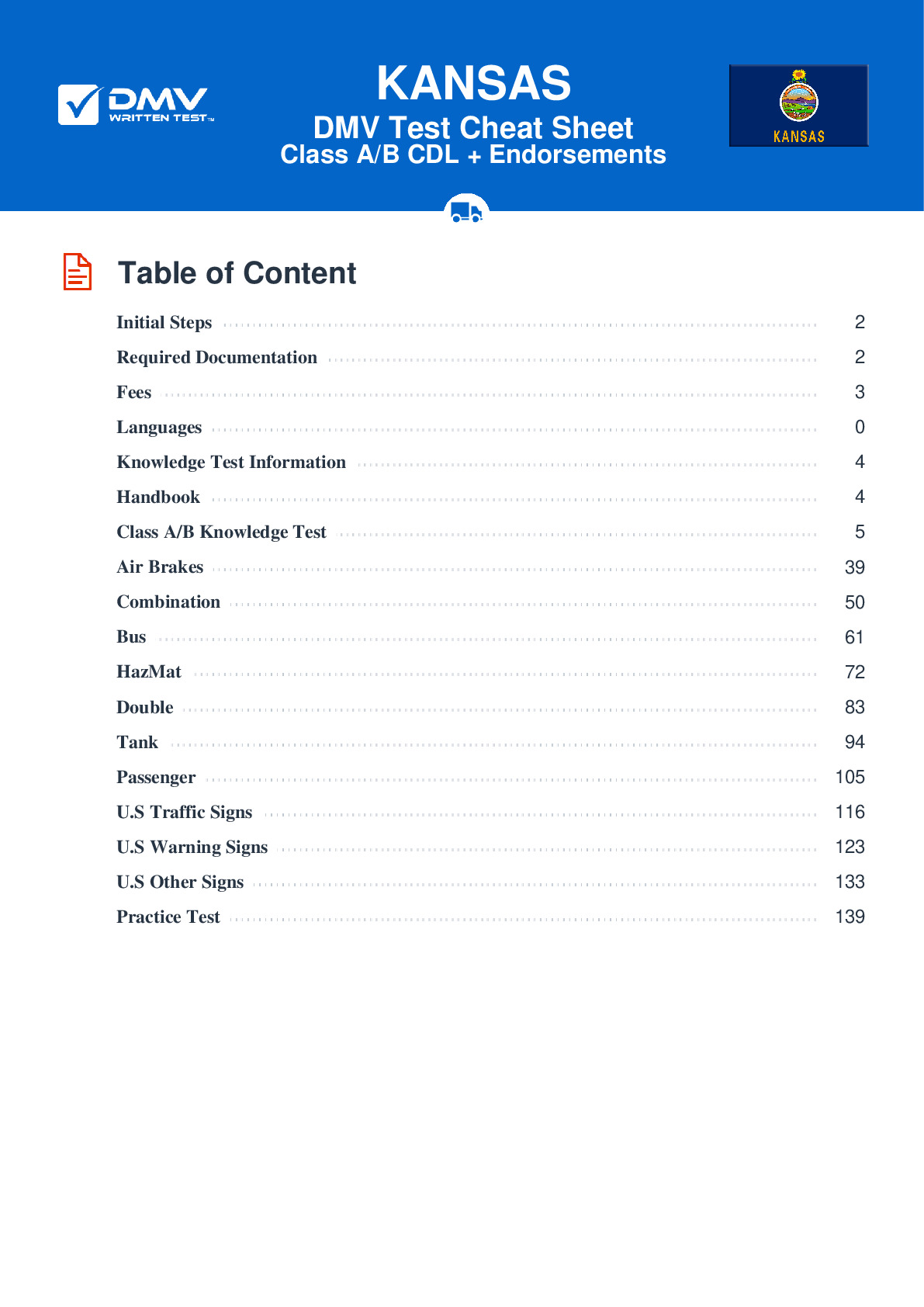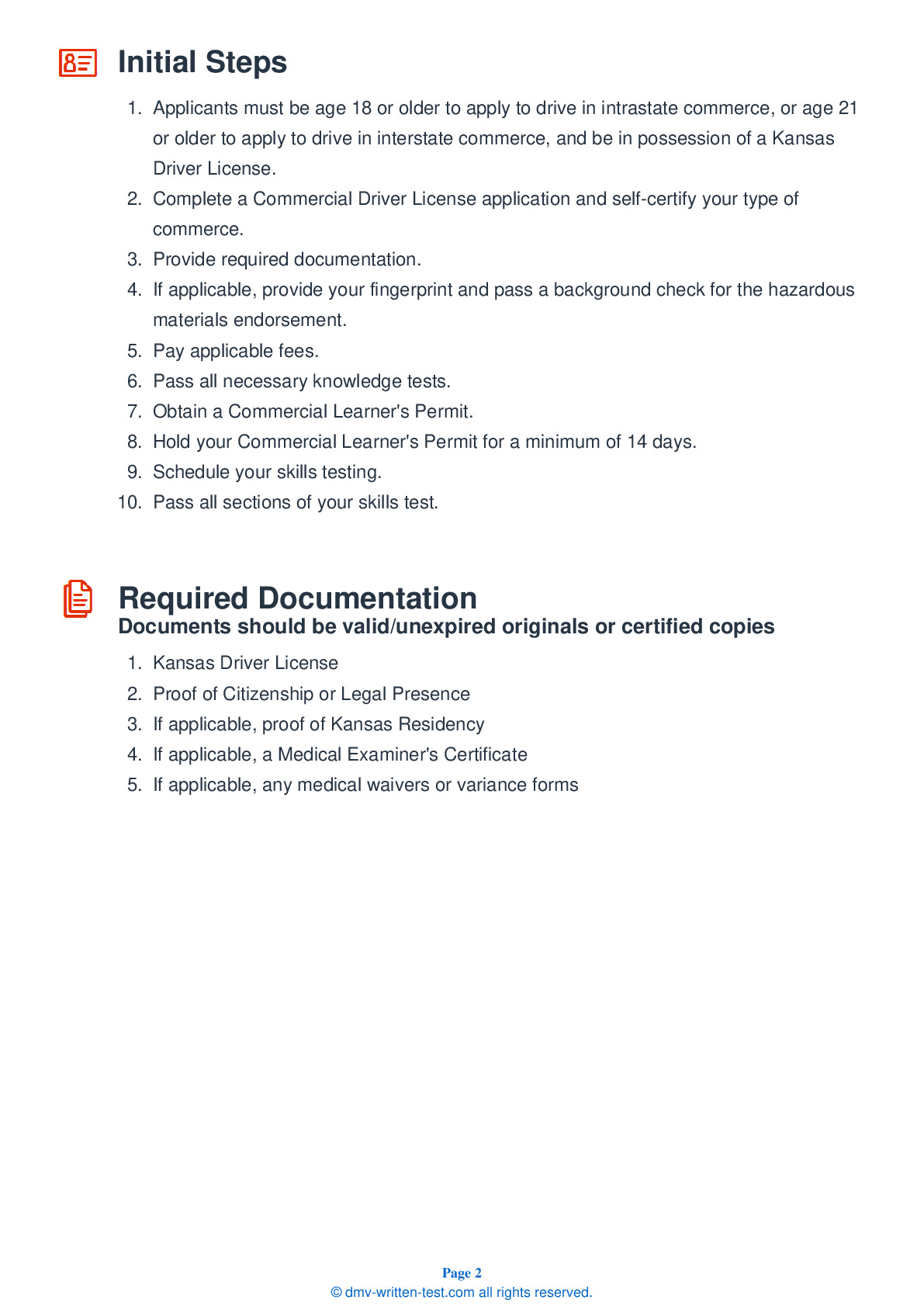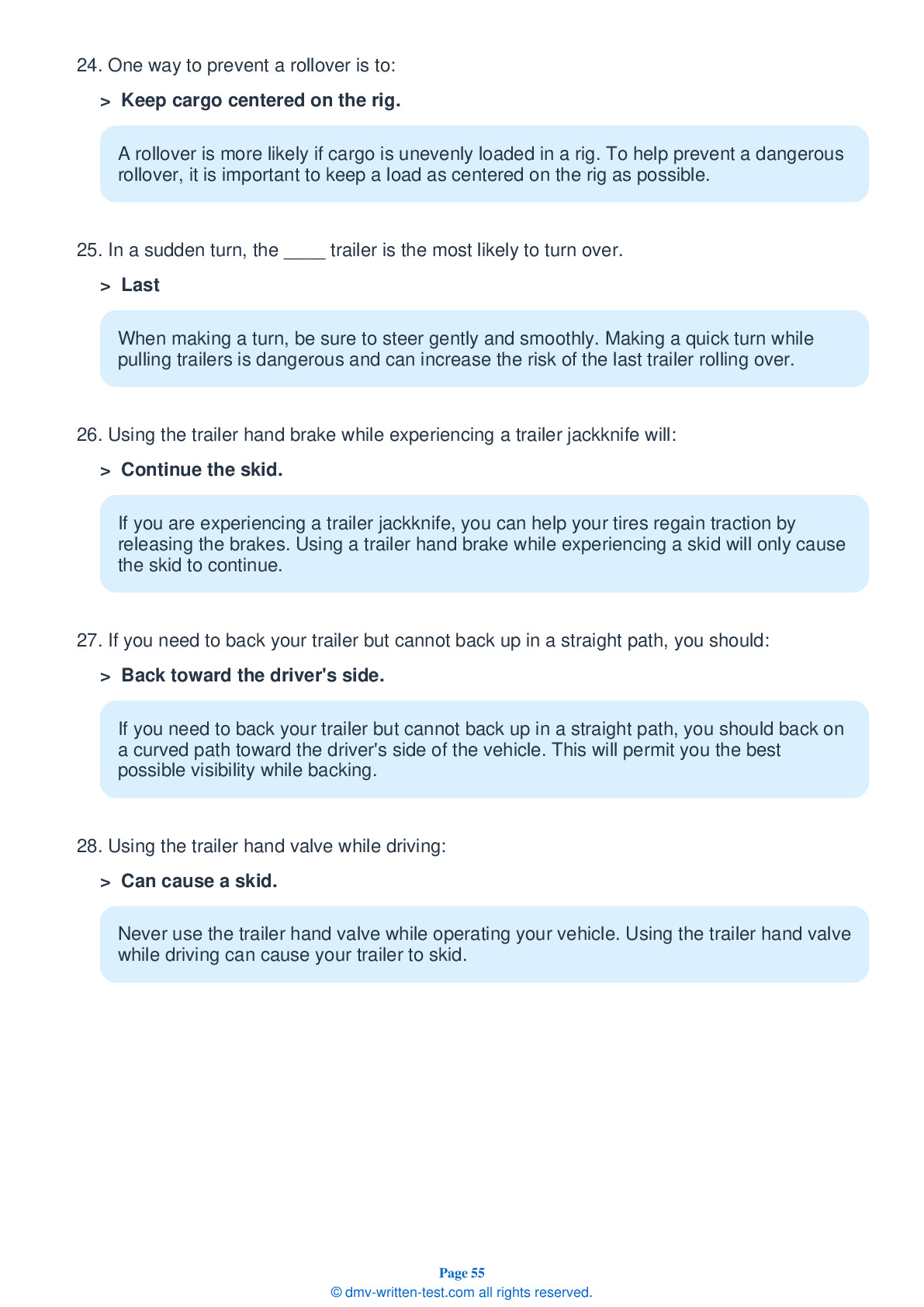Air Brakes
This endorsement is required for driving a vehicle with air brakes. To receive this endorsement, applicants must pass a written test. The test consists of 25 multiple choice questions. Each question has four answer choices. To pass, the applicant must answer at least 20 questions correctly. Test questions come from the Kansas Commercial Driver License Manual. Questions come from the chapter covering: Air Brakes. The Air Brakes endorsement may be used with the Class A, B or C CDL.
Number of Question
Passing Score
1. Vehicles with dual air brake systems:
Explanation
Before driving a vehicle with a dual air brake system, you must allow the air compressor time to build up at least 100 psi of air pressure in both the primary and secondary systems.
2. While driving downhill, you should brake until you reach a speed that is ____ below your safe speed, then release the brake pedal.
Explanation
While driving downhill, you should hold down the brake pedal until your vehicle reaches a speed 5 mph below your safe speed, then release the brake pedal. Repeat this process.
3. The air pressure in a dual air brake system should build from 85 to 100 psi within:
Explanation
When inspecting a vehicle with a dual air brake system, you should wait for air pressure to build from 85 to 100 psi in both the primary and secondary systems. This should take about 45 seconds.
4. When traveling down a steep downgrade:
Explanation
On a downgrade, the braking effect of the engine should be your primary method of controlling speed. Shift down to a lower gear before starting down the hill and save the brakes for additional slowing or stopping that may be required by road or traffic conditions.
5. How is the parking brake released?
Explanation
In newer vehicles with air brakes, the parking brakes are controlled by a diamond-shaped yellow knob. Pull the knob out to activate the parking brakes and push it in to release them.
6. During an applied leakage test, the maximum leakage rate for a triple combination vehicle is:
Explanation




